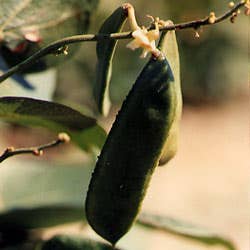
Lima Lore
The humble lima is known by many names, but whatever you call it, it’s delicious.
When European colonists arrived in New England and discovered the lima, they first called it the butter bean, because of its creamy texture and sweet flavor. In England and the American South, the bean still often bears that name. But since the mid-1700s, most Americans have known it as the lima bean, in honor of the capital of Peru, in whose fields a type of large lima was first cultivated.
There are two basic varieties of lima bean: Phaseolus limensis, the large lima, also known as the Madagascar, Burma, or Cape bean (or Cape pea), and Phaseolus lunatus, the smaller bean also called the baby lima, sieva bean, or civet bean. The larger bean is just as tender as the baby one, but has a nuttier flavor. Lima plants are hardy, and fresh beans are cultivated across the United States, with California being (as with so many crops) the nation's largest producer.
Most limas are sold frozen or dried, because they're difficult to shell. They used to be difficult to harvest, too, because they climbed up tall poles. In the late 1880s, someone happened upon a mutant bush form of the plant and sold his discovery to a seed company. Today most commercial beans are grown on bushes. The favored variety is the Fordhook, appreciated for its robust health and large size. A more unusual variety is the Christmas lima bean, an heirloom variety speckled with maroon.
Keep Reading
Continue to Next Story










